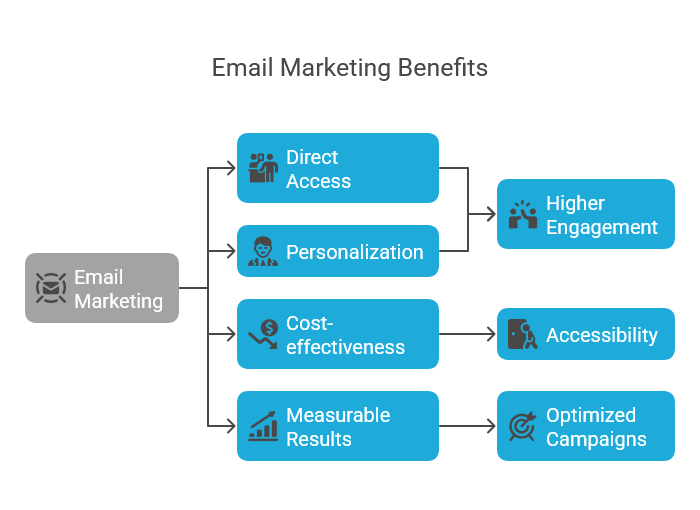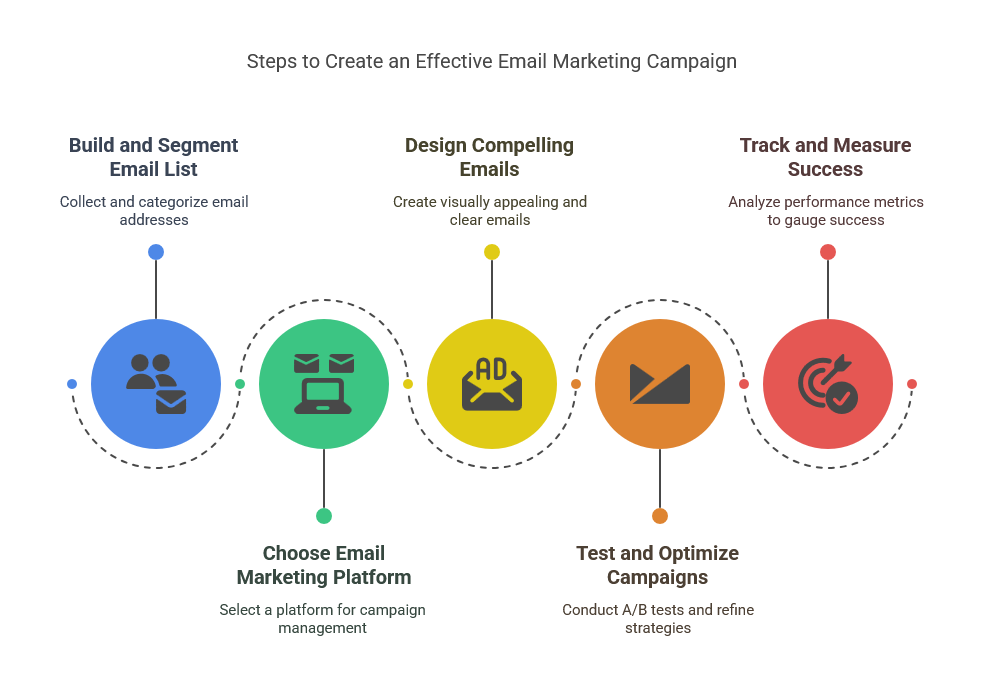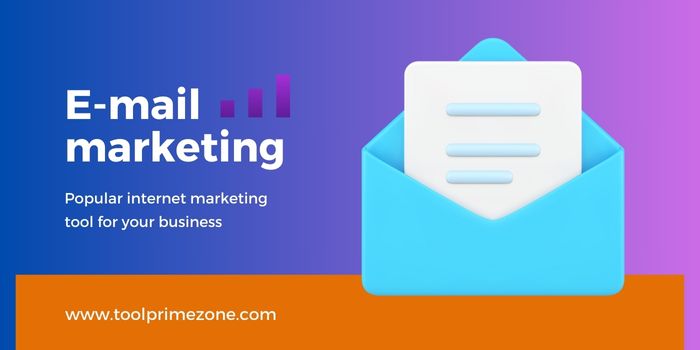Email marketing is one of the most influential and cost-effective ways to build customer relationships, increase engagement, and grow your business. With the right strategies, email marketing can help you create personalized experiences for your audience and see a significant return on investment (ROI).
This comprehensive guide will explore the basics of email marketing, the types of email campaigns you can use, and the best practices to make your email marketing efforts successful. Whether you’re a small business owner or a marketer looking to optimize your campaigns, this guide has everything you need to know.
What Is Email Marketing?
Email marketing sends emails to contacts who have opted to receive your information. These emails could be promotions, newsletters, updates, or any other valuable communication to your audience. The goal of email marketing is not just to send messages but to create meaningful, personalized interactions with your subscribers.
Email marketing is often more effective than other forms of online marketing because it allows you to reach your customers directly in their inboxes. With the right approach, your emails can cut through the noise and generate accurate results for your business.
Why Email Marketing Matters
In a world where social media and paid advertising dominate marketing, it’s easy to forget email marketing. However, email continues to provide the best ROI among digital marketing channels. According to a study by Litmus, the average ROI for email marketing is $42 for every $1 spent. This makes it one of the most effective ways to reach and engage your audience.
Here are some key reasons why email marketing remains a powerful tool for businesses:
-
Direct access to your audience: Email allows you to communicate directly with people who have already shown interest in your business. This makes them more likely to open and engage with your emails.
-
Personalization: Email marketing lets you personalize content based on your subscriber’s behavior, interests, or location. This increases relevance and engagement, leading to higher conversion rates.
-
Cost-effectiveness: Unlike other marketing channels like TV, radio, or print, email marketing is relatively inexpensive, making it accessible to businesses of all sizes.
-
Measurable results: Email marketing platforms provide detailed analytics that allow you to track open rates, click-through rates, and conversion rates. This helps you optimize your campaigns for better performance.

Types of Email Marketing Campaigns
Email marketing is not a one-size-fits-all approach. There are various types of email campaigns, each serving a unique purpose. Here are the most common types of email campaigns you can use for your business:
1. Newsletter Emails
Newsletters are one of the most common types of email marketing campaigns. They typically include updates, news, tips, and other helpful content that helps build a relationship with your subscribers. By sending regular newsletters, you can keep your brand top-of-mind and show your audience you’re a valuable resource.
2. Promotional Emails
These emails promote a product, service, or special offer. Promotional emails aim to drive sales or actions from your subscribers. For example, you could offer discounts to encourage purchases or promote a new product or service.
3. Welcome Emails
The first impression is crucial. A welcome email is sent when someone subscribes to your email list. It’s an opportunity to introduce your brand, set expectations for future emails, and even offer an incentive like a discount or freebie to encourage the first purchase.
4. Transactional Emails
Transactional emails are automated messages sent in response to a specific action. For example, after a customer makes a purchase, you might send them an order confirmation email or shipping update. These emails can be highly personalized and provide helpful information to your customers.
5. Re-engagement Emails
Sometimes, subscribers lose interest or forget about your brand. Re-engagement emails are meant to reconnect with those who have become inactive. You can offer special discounts, share new content, or ask for feedback to engage them again.
6. Abandoned Cart Emails
For e-commerce businesses, abandoned cart emails are one of the most effective ways to recover lost sales. If a customer adds items to their cart but doesn’t complete the purchase, an abandoned cart email reminds them to finish their order and often includes a special offer to encourage them to return to your site.
Steps to Create an Effective Email Marketing Campaign
Now that you understand the different types of email campaigns, let’s dive into the steps for creating a successful email marketing campaign.
Step 1: Build and Segment Your Email List
The first step in email marketing is to build a high-quality email list. You can collect email addresses through various methods, such as offering a free download, using pop-ups on your website, or hosting a contest. Make sure you obtain permission before sending emails.
Once you have your list, it’s essential to segment it based on factors like demographics, purchasing behavior, or engagement levels. This will allow you to send highly targeted emails that resonate with your audience and improve your chances of a positive response.
Step 2: Choose an Email Marketing Platform
Choosing the right email marketing platform is crucial for managing your campaigns. Platforms like Mailchimp, Constant Contact, and Sendinblue offer user-friendly interfaces and advanced features like automation, A/B testing, and detailed analytics. These tools also provide customizable templates to help you create professional-looking emails without needing coding skills.
Step 3: Design Compelling Emails
The design of your emails plays a significant role in how they are received. Your emails should be visually appealing, easy to read, and mobile-friendly, as many people check their emails on smartphones. Keep your emails simple, with a clear structure and strong calls to action (CTAs) that guide your readers toward the desired action.
Step 4: Test and Optimize Your Campaigns
Testing is key to improving your email marketing campaigns. Run A/B tests to compare different subject lines, email designs, and CTAs to see what works best. Use your analytics to monitor performance and optimize your campaigns over time.
Step 5: Track and Measure Success
Email marketing platforms provide a wealth of data, such as open rates, click-through rates, bounce rates, and conversions. Monitor these metrics to determine which campaigns are performing well and which need improvement. Regularly analyze your results to refine your strategy and achieve better results.

Email Marketing Best Practices
To ensure the success of your email marketing campaigns, follow these best practices:
-
Personalize your emails: Personalization can increase email engagement. Use your subscribers’ names and segment your list for targeted content.
-
Write attention-grabbing subject lines: The subject line is the first thing your recipient will see, so make it count. Test different subject lines to see which ones get the best open rates.
-
Make your emails mobile-friendly: Over half of all emails are opened on mobile devices, so ensure your emails look good on smartphones and tablets.
-
Use clear and compelling CTAs: A strong CTA helps guide your recipients toward the desired action, whether it’s making a purchase, signing up for a webinar, or downloading a resource.
-
Avoid spammy language: Do not use words like “free,” “guaranteed,” or “exclusive” in your subject lines or email body. These can trigger spam filters and reduce your deliverability.
Trends in Email Marketing
The world of email marketing is constantly evolving. Here are a few trends that are shaping the future of email marketing:
-
Automation: Email automation helps you send personalized, timely messages based on user behavior. For example, you can set up automated welcome emails, birthday emails, or follow-ups after a purchase.
-
AI and Machine Learning: Artificial intelligence is being used to optimize email marketing campaigns by predicting customer behavior, segmenting lists, and personalizing content on a deeper level.
-
Interactive Emails: Interactive elements like polls, surveys, and quizzes are becoming more common in emails. These elements can increase engagement and make the email experience more dynamic.
Frequently Asked Questions (FAQs)
1. How often should I send email marketing campaigns? The frequency of your emails depends on your audience and goals. For most businesses, sending one email weekly is a good starting point. However, make sure not to overwhelm your subscribers with too many emails.
2. Can I send emails to people who haven’t subscribed? No, this would violate privacy laws like GDPR and CAN-SPAM. Always obtain consent before sending marketing emails.
3. What should I include in my email subject line? Your subject line should be clear, concise, and engaging. It should create curiosity, offer value, or highlight an exclusive offer.
4. How do I increase my email open rates? Test your subject lines, personalize your emails, and send emails optimally to improve open rates. Segmenting your list also helps send more relevant emails.
5. What are the benefits of using email automation? Email automation saves time and allows you to send personalized emails based on user behavior. It helps maintain consistent communication with your audience and improves overall efficiency.
Email marketing is essential for businesses looking to connect with their audience and drive results. You can create effective campaigns that foster relationships, increase engagement, and boost sales by building an engaged email list, segmenting your contacts, and using personalized content. Remember to test, analyze, and optimize your efforts to see the best results.

